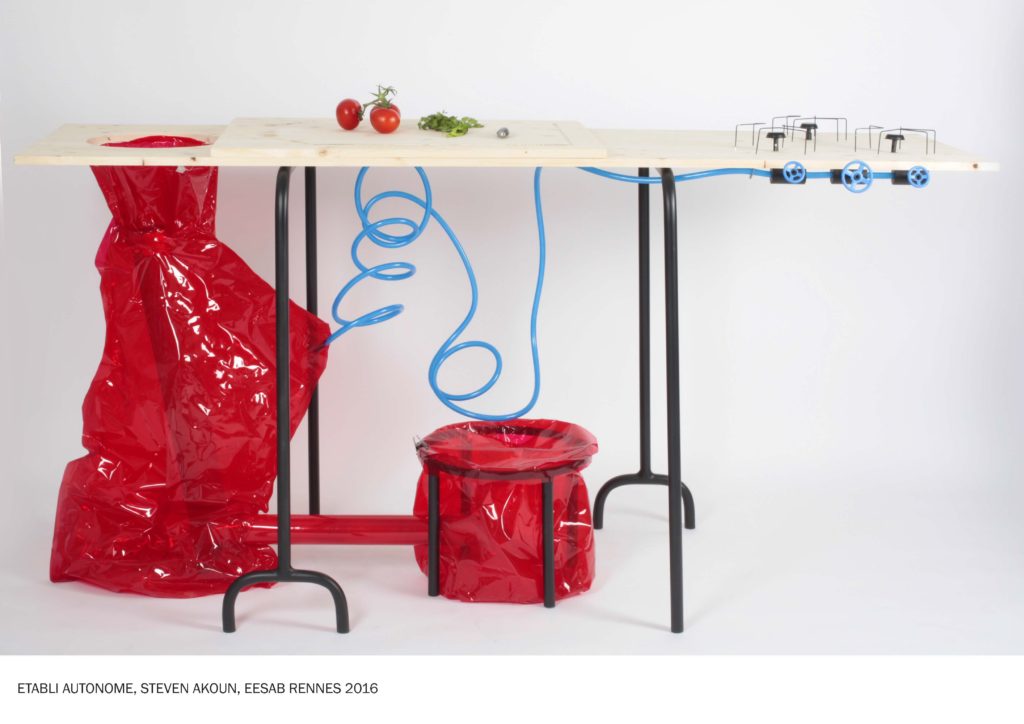Let’s Cook with our Waste

Steven Akoun
We did not meet in person yet, but Steven Akoun is really excited about his idea.
He is a design student at the School of Fine Arts in Rennes (Ecole Européenne Superieur d’Art de Bretagne), and as a design student he analyses nature’s systems and shapes. He questions how we benefit from natural phenomenons and he studies the limits of designing living matter.
I asked him to explain his idea and his product in few lines and here what he sent to me the other day. Check it out.
Designed for community kitchens inside university dorms, this prototype of a combined work table/cooktop transforms organic waste into gas and fertilizer. Thanks to its biodigester system, the table is energetically autonomous. Meals can be cooked with the produced gas and community gardens can be fertilized once the matter has decomposed.
This object emulates a living organism that questions the way we recycle organic matter. The black steel stands are like the bones that structure this ecosystem. The bright red biodigester bags are the expanding organs that encase the waste and the blue gas tube is the vessel that transports the flow of energy to the burners.

Like Richard Rogers and Renzo Piano’s Pompidou Center in Paris, the table is straightforward and expressive. The biodigester system is completely apparent and displays its intriguing machinery. In contrast with the chaotic digester system, the wooden work table is simple, clean and smooth.
After the user has cut his food on the top board, he can slide it open, and dump the waste into the digester bag. The user can then turn on the burners and cook his meal. If needed, he can obtain some fertilizer produced by the biodigester directly from the red bucket.
Only a short period of time is required to get the biodigestion system started and capable of furnishing energy. Keeping the system alive is only a matter of using it on a regular basis.
